Black Forest: Hiking, sauna, Jacuzzi, eat, rinse, repeat
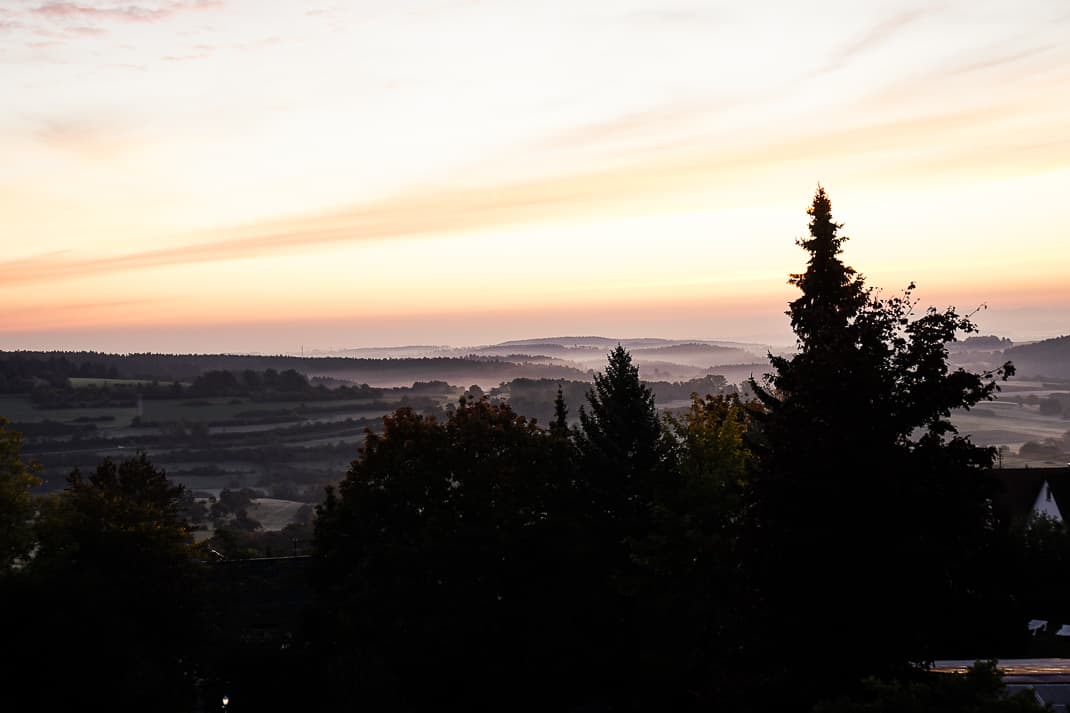
WALDACHTAL, Germany — We walked across the narrow road from our spa, where we lounged in the lap of lazy luxury all week, and into instant wilderness. Fir and pine trees stretched 100 feet into a steel gray autumn sky. Ferns, bushes, grass and ground cover painted a picture of an emerald green ocean stretching to the horizon.
More than 2,000 years ago when the Ancient Roman army ruled this land they couldn’t see the forest through these trees. In fact, they couldn’t see anything through these trees. They were so thick, sunlight dissolved into mere twinkles by the time it reached the mossy earth.
It has been called the Black Forest ever since.
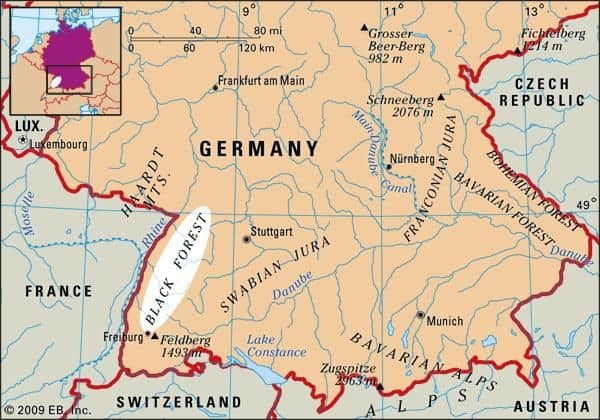

Marina and I came to southwest Germany two weeks ago to taste a slice of spa life in one of the most mysterious regions in Europe. The Black Forest isn’t just a forest. It’s a region, measuring 100 miles long by 30 miles wide and covering 1.5 million acres. It’s the size of Delaware. That’s not big for a state but imagine the same area trunk to limb with trees and 13,800 miles of well-marked hiking trails.
Add a conscientious attention to conservation and it’s no mystery why the Black Forest is one of the most popular areas in Germany. That is no fairy tale. In fact, the Black Forest really has nothing to do with the theory that Grimm’s Fairy Tales were based there. More on that later.
We were more interested in saunas and picnics in forest meadows than wild fables about little girls barely escaping man-eating wolves.

Why the Black Forest?
The Black Forest has fascinated Marina ever since she read stories about it in her old travel magazine, PleinAir, where she was a graphic artist. She saw the photos of the tall trees, the isolation, the raw beauty.
She also grew up like many children with tales of daring do, of fellow kids defying the odds of hungry wolves, witches and evil stepmothers. Yes, nearly everyone grew up on Grimms’ Fairy Tales. Unfortunately, I had some bad news for Marina.
The Black Forest as the site of Grimms’ Fairy Tales is a fairy tale in itself.
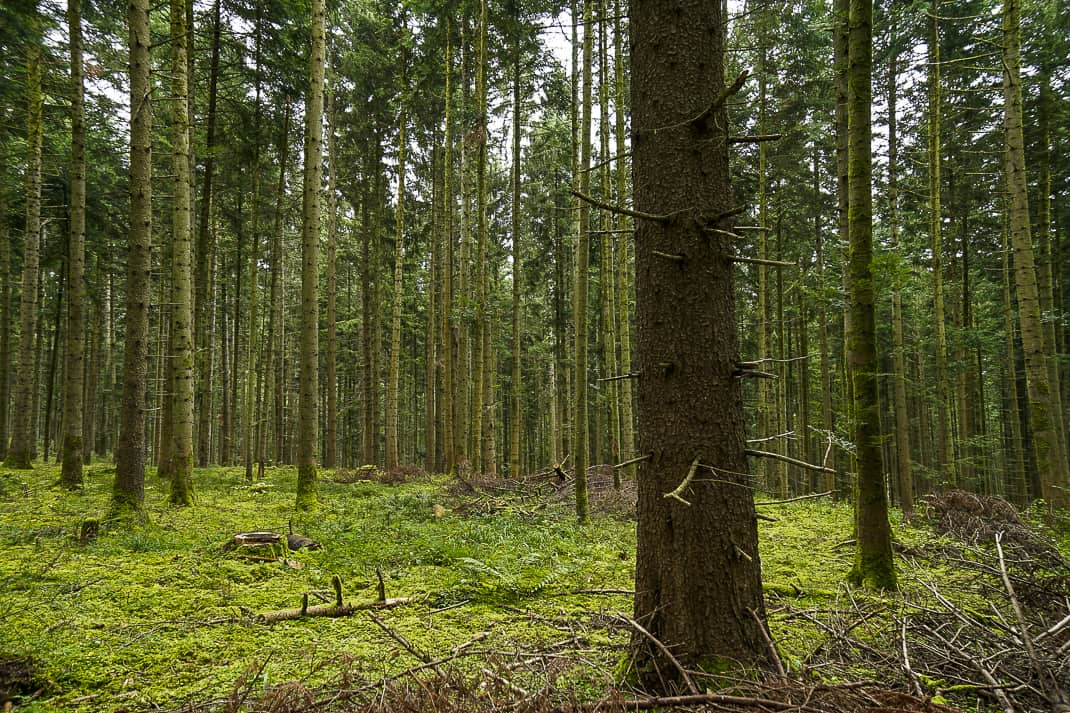
It’s a common theme here, particularly in souvenir stands, that the Black Forest’s perpetual darkness, perpetuated by morning fog, produced the eerie atmosphere that inspired the Brothers Grimm’s stories.
It’s apparently not true. The brothers, Jacob and Wilhelm, were born in Hanau, grew up in Steinau, went to university in Marburg and worked in Kassel, Gottingen, Berlin and Mainz. Not one town is in the Black Forest’s state of Baden-Wurttemberg. They never lived within 120 miles of the Black Forest. There is no historic documentation that the Black Forest was their inspiration and it’s never mentioned in their 200 children’s stories. However, their descriptions of dark and scary forests certainly sound like the Black Forest.
But if you’re planning a trip here, don’t tell your kids.
The arrival
Finding the back of beyond in rural Germany isn’t difficult. We took a 1-hour, 45-minute flight from our home in Rome to Stuttgart and drove the 40 miles south to Waldachtal. However, in between made me want to fire my travel agent.
Me.
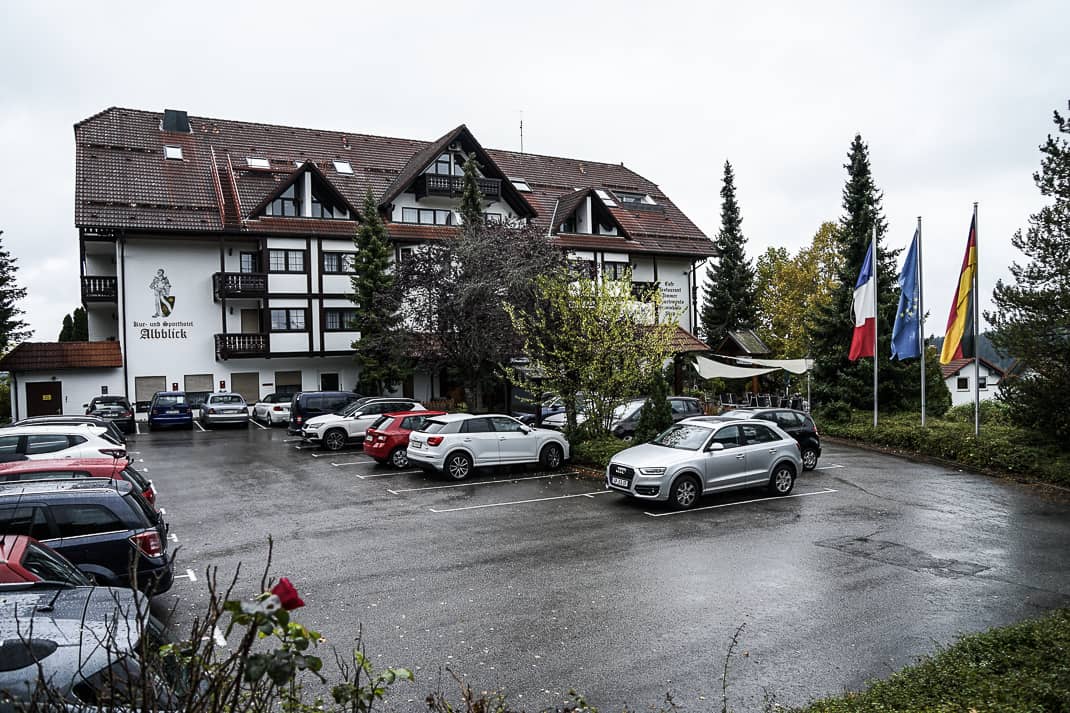
Unless your hiking itinerary includes walking 40 miles from the airport, renting a car is a must. The Black Forest is dotted with villages served by only occasional public transportation. Also, Germany’s top-notch road system has convenient viewpoints where you can stop and photograph the remarkable surroundings.
However, the rental car agency I booked was 30 minutes south of Stuttgart. When we arrived, we twice bounced between two offices: one for Americans and one for everyone else. Surprisingly, I was everyone else. The American office is for American military, of which there are 40,000 American military personnel in Germany, including a base a short jog from the agency.
“Do I look like an American military man?” I annoyingly asked the agent.
“Yes,” he said without smiling and in a tone I didn’t know indicated a compliment or insult.
The 40-mile drive to the spa took more than 90 minutes. Road maintenance crews (one reason why we never saw a single bump or hole in a German road) made us double back and take detours twice.
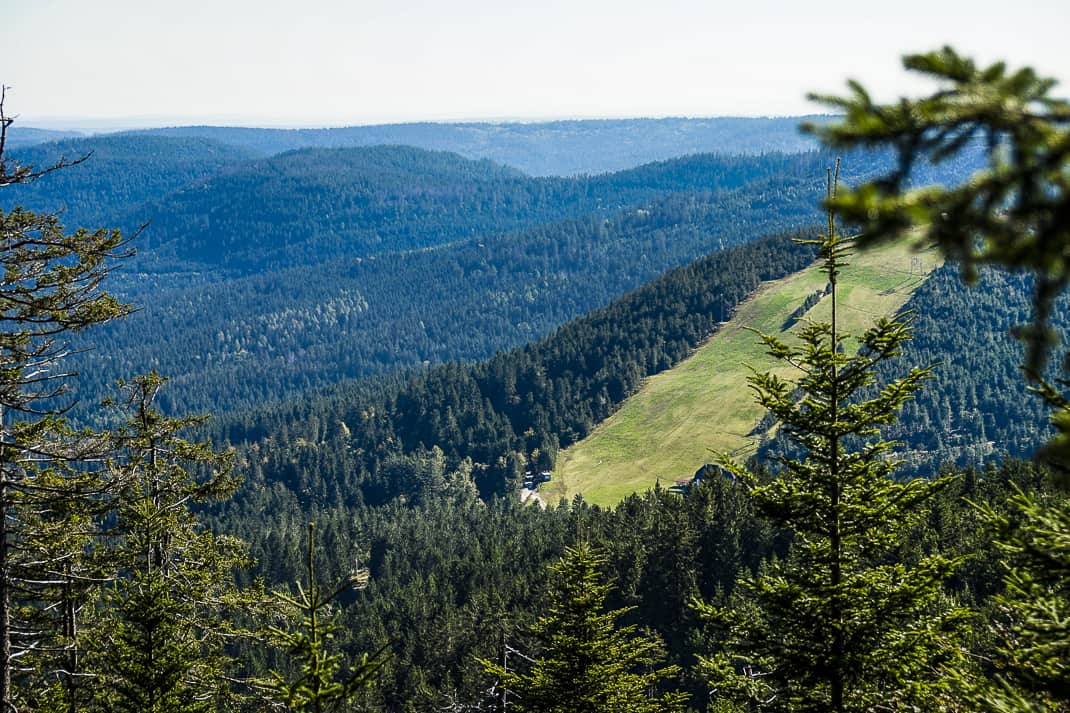
But the added time on the road became a bonus. We passed beautiful green meadows with a backdrop of red and green trees. The Black Forest’s fall colors aren’t as varied as in New England or my old Colorado but were vivid in their brightness.
In the background behind the highway was a vast landscape of thick trees stretching up hills on both sides of the road. We could tell the Ancient Romans gave this place the right name.
Between the trees we saw nothing.
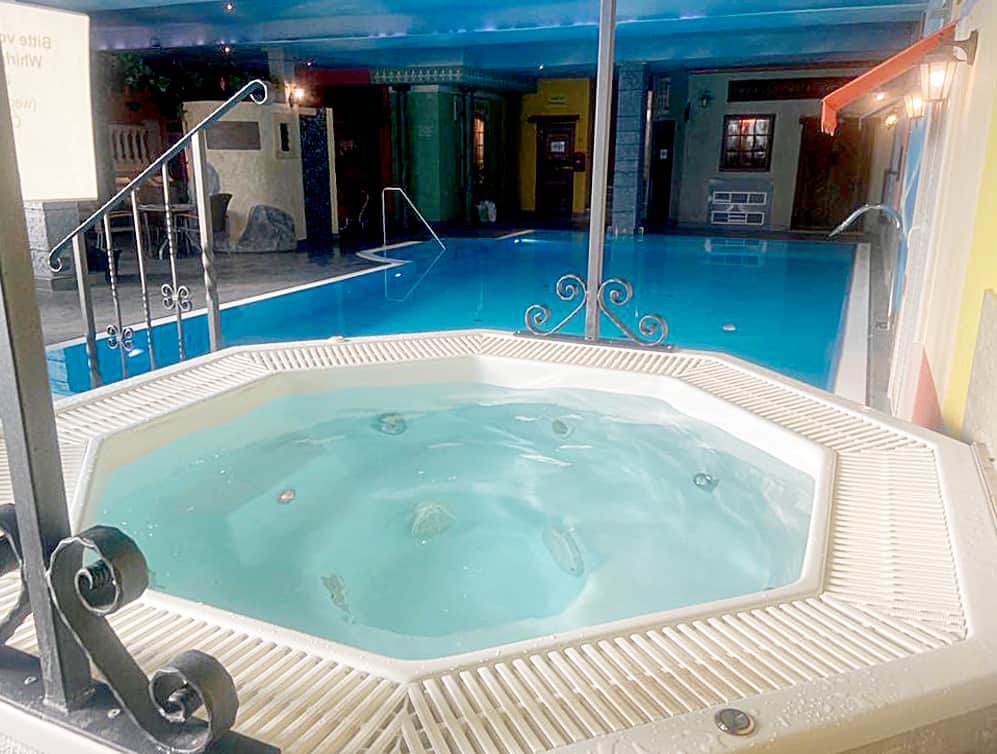
The spa
Waldachtal is a middle-class village of about 6,000 people with spotless streets and spacious homes with nice cars parked in driveways. It could pass for an American suburb except it has no TGI Fridays. In fact, Waldacthal has no restaurants. The nearest one is 12 miles away. Too bad. The Black Forest region sports 17 restaurants with Michelin stars.
However, much of the Black Forest is as dead as the seven dwarfs chances with Snow White.
Waldachtal is best known for two things: toy manufacturing and a terrific spa. The Vital & Wellnesshotel Albblick is a four-spa hotel atop a long hill and looks like a ski resort with its four snow-white floors and three A-frames on the roof.
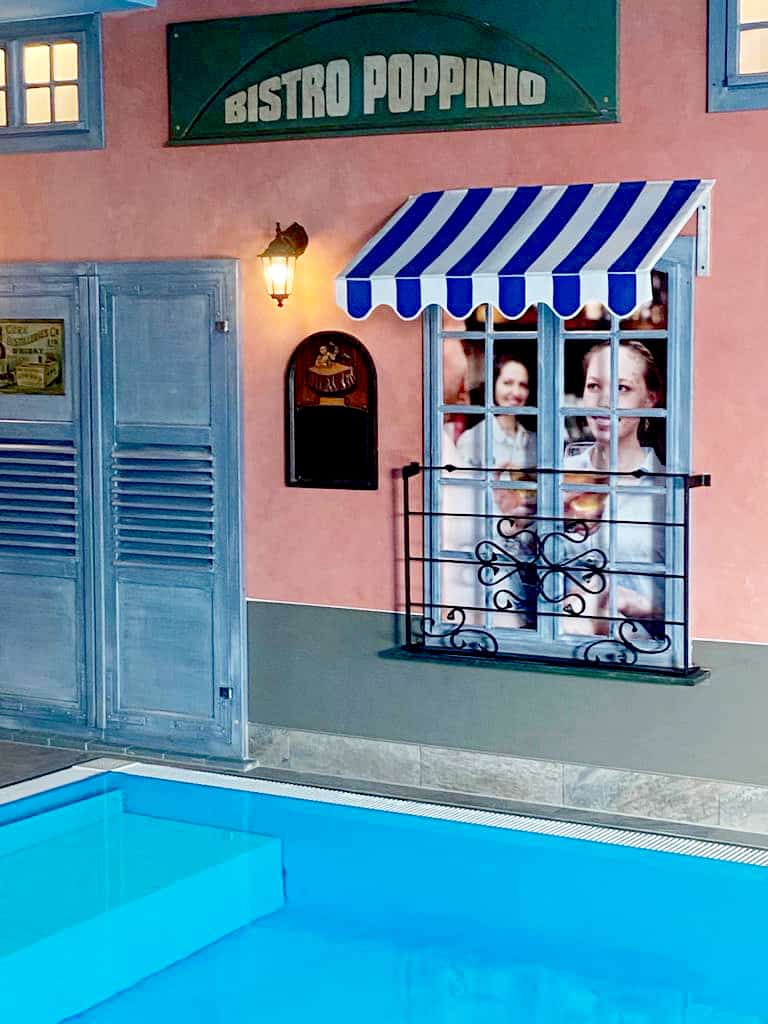
We walked one floor below the lobby to an entire hallway of saunas. The Albblick is constantly booked and the saunas are always on, piping hot to sweat in as soon as you enter. However, we found ourselves averting our eyes at the horrific old, fat and naked German bodies walking leisurely around the hall, paying us no mind.
After 15 minutes of sweat and bilingual conversation, we’d take a quick shower across the hall and go down another floor to an outdoor pool with lounge chairs.
We’d walk a few feet to a room called Piazzetta del Sole. Inside was an indoor pool and a Jacuzzi with an odd Italian theme. Signs over doors reading “Gelateria Michelangelo” and “Bistro Poppinio” made me think we were on a beach in Puglia rather than the backwoods of Germany.
It also had a spacious gym full of equipment, an indoor tennis court and a body treatment center.
If retirement is the ultimate in eternal relaxation, a spa is the ultimate in retirement.
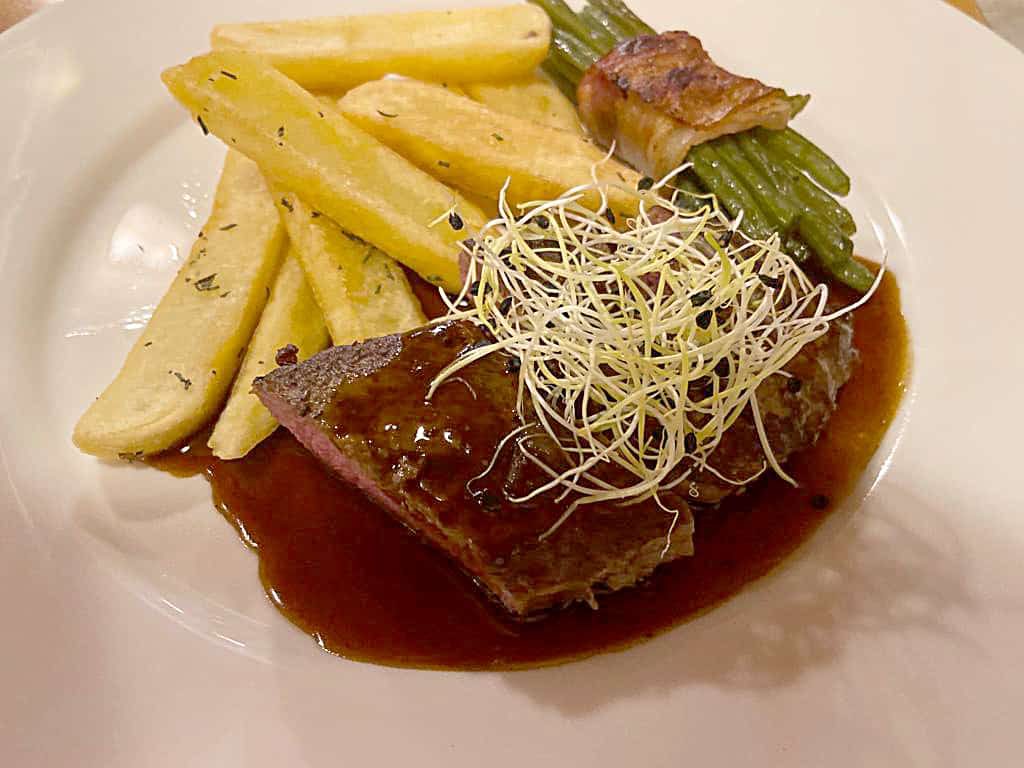
A German vibe
The Albblick is as German as a bratwurst and sauerkraut at a Bayern Munich soccer match. It has German guests, German staff, German food, German booze, German language, German music, German efficiency and German vibe.
In four days, we were the only foreigners. The staff, the few who spoke English, told me the clientele is always 85-90 percent German. We loved it. We try to go native wherever we go and there’s no deeper plunge into a culture than a German spa in the Black Forest.
The good side of being in the middle of nowhere, and a 20-minute drive from the nearest restaurant, is that it inspired us to eat at the spa every night. So did the food. The Albblick gets my Henderson star.
It covered the breadth of Black Forest cuisine. It alternated from lavish buffets to sit-down menus (only in German, of course) and both were exquisite. Black Forest cuisine is lighter on the big sausages you see on streets all over Germany and big on fat noodle dishes, potatoes in every conceivable style and, of course, the famous Black Forest Cake.
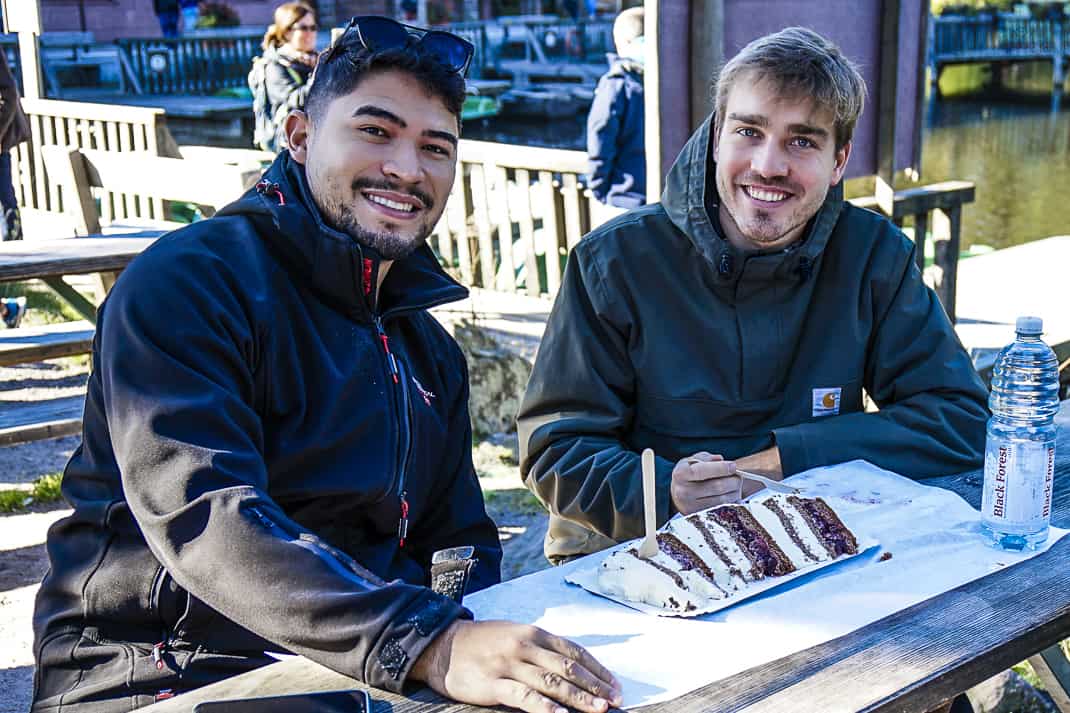
One night I ordered a famous dish that originated in Swabia, the region where Stuttgart is the capital. Maultaschen is giant flat ravioli pockets stuffed with meat and covered in a rich, dark brown meat gravy. It’s called herrgottsbeschieserle (God’s trickster) because at one time Catholics used it as a way to secretly eat meat during Lent. Even living in Italy I’d say this ravioli would score back home.
Then there is the tongue-twisting zwiebelrostbraten an bratenjus, roast beef and onions and another rich gravy. Served medium rare, it dissolved in my mouth and the gravy made me think I was in a steakhouse back in Colorado.
Off the buffet line I found spaetzle, short egg noodle dumplings covered in melted cheese. This doesn’t count the extensive cheese and salami trays, the salad bar, the giant soup tureens and about 12 different loaves of homemade bread.
Then there’s always room for the Black Forest Cake. It’s a tall, fat, three-layered chocolate sponge cake lined with morello cherries and cream then covered in more cream and chocolate speckles. It’s as gluttonous as it sounds and as addicting after hiking as IHOP after an all-night binger.
It also adds tremendous incentive to hit the Black Forests’s wild network of hiking trails.
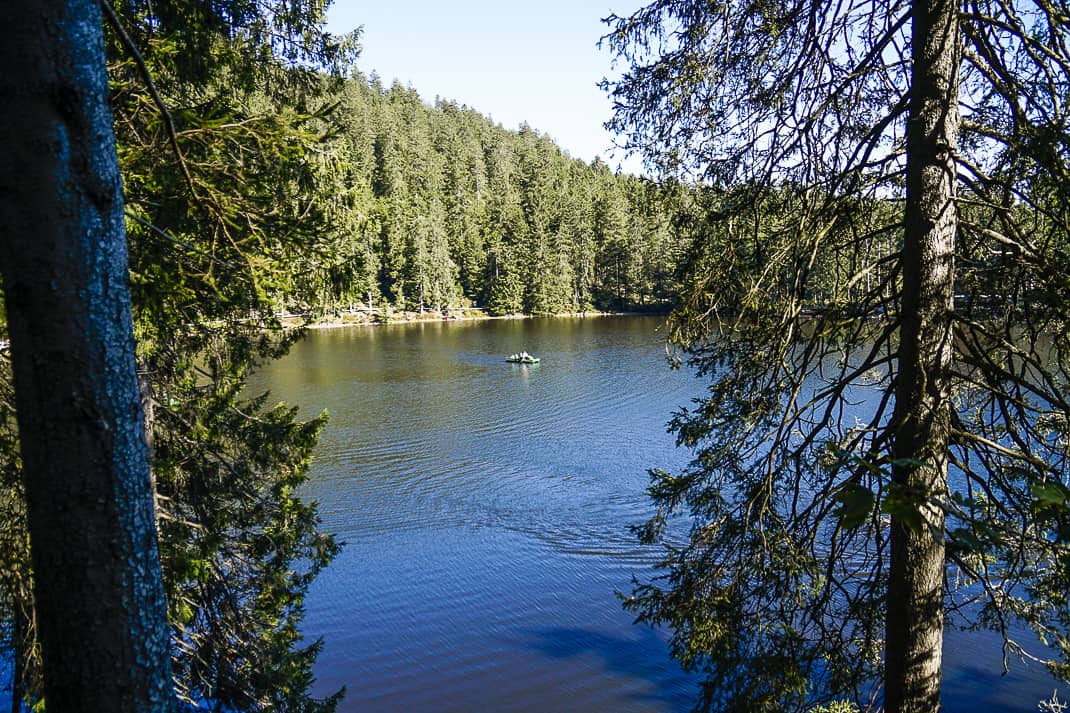
Hiking
The staff’s limited English and knowledge forced us to rely on a fellow guest, a young German with impeccable English and some rudimentary knowledge of the area. She directed us to Mummelsee, a small lake 30 miles northwest of Waldachtal that’s a good base for hikes of all levels.
When we arrived it looked like a Vail ski resort after a fresh snowfall. Both parking lots were full. We parked on the side of the road about 100 meters from a string of souvenir shops, restaurants and hotels. Hundreds of people filled nearly every chair bordering the lake.
We saw no tourist office. You could buy pretzels and cuckoo clocks but not ask where a trailhead was. Instead, we took a picture of a big map near the lake and ventured off on our own.
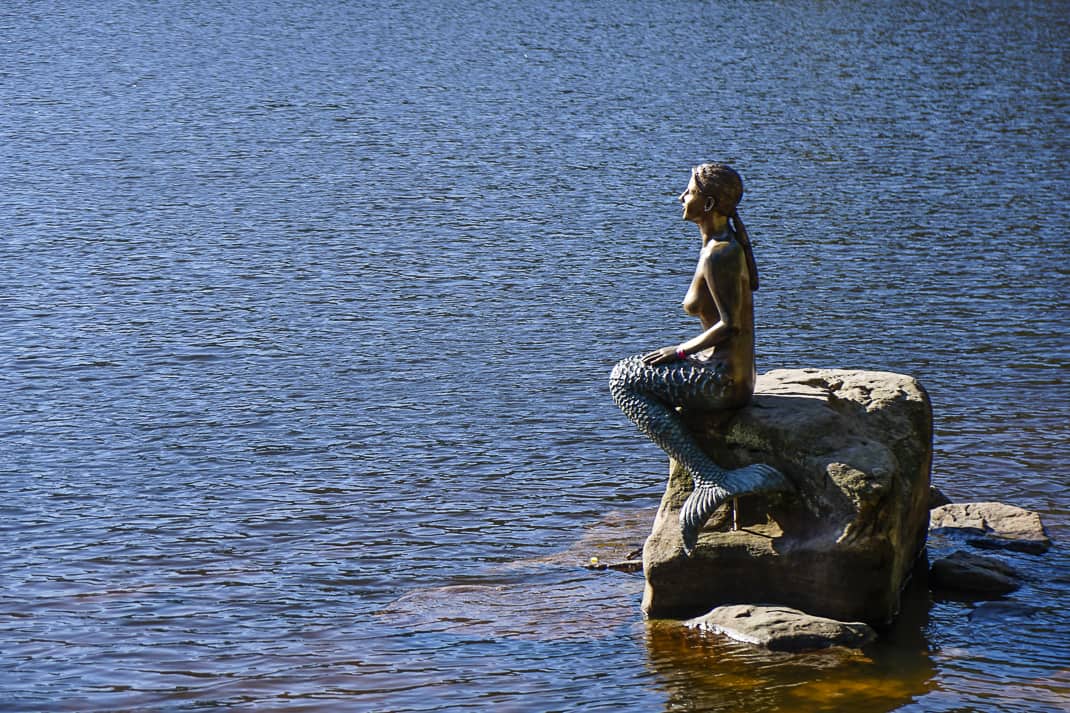
While Mummelsee is as beaten a path as you’ll find in the Black Forest, we quickly learned why. We walked the mile around the small but beautiful lake. We shared the wooden path with other hikers who all marveled at the towering trees climbing to the heavens above us.
We passed smart wooden carvings depicting old lake myths and a pretty wooden mermaid stared off into space from inside the lake.
When we completed the loop we started to climb the Summit Tour. It’s a steep service road with the changing elevation marked every 10 meters. Here the crowd began to thin the higher we climbed. At about 1,100 meters we were above the treeline and the views were spectacular. We looked down at forested hills of bright greens and golds cascading to emerald valleys for as far as our eyes could see.
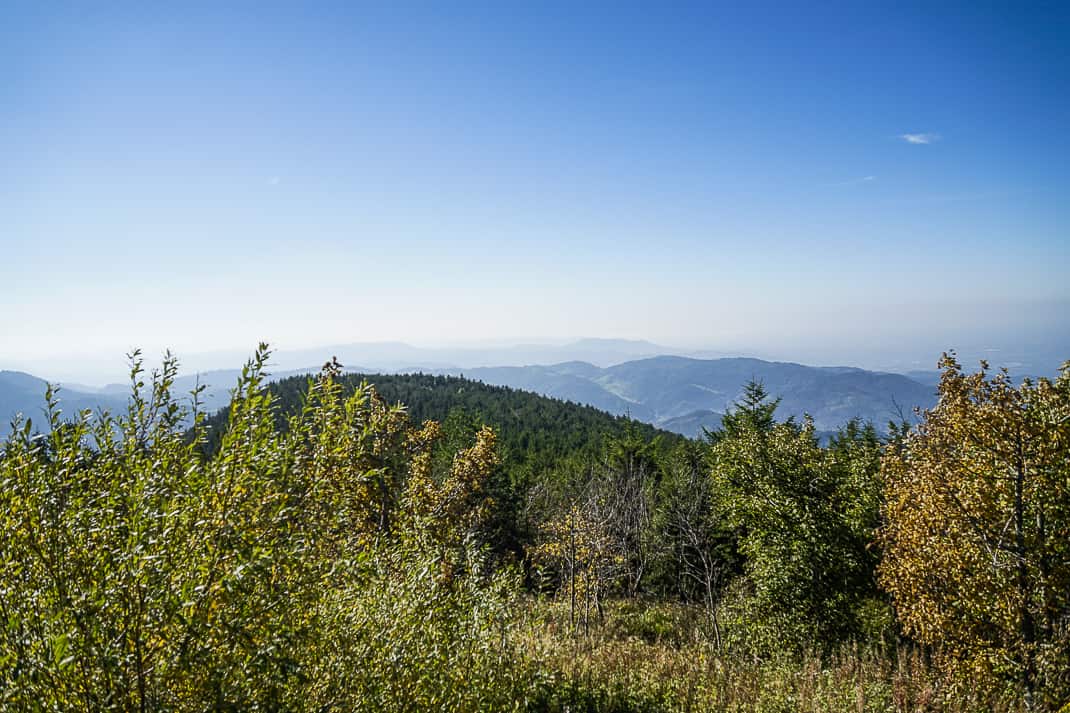
At the top, beyond the panoramic vista of the entire valley, a giant windmill twirled in a place called Windepark. It was one of many wind turbines we saw in a region which is considered the most green in Germany. In fact, by 2025 Munich is hoping to become the first city in the world to be powered only by renewable energy sources and by 2022 Germany plans to turn off all its nuclear power stations, a goal established in 2011.
Conservation is everywhere here. Despite the thousands of people on these trails, we didn’t see a single piece of trash.

Off beaten path
Surfing the Internet the next day, we settled on an area 80 miles northwest of Waldachtal. Merkurius Berg near 2,200-foot Mt. Merkur is the base for hiking trails all over the area. Hopelessly confused by the confusing signs (all in German) and no office to inquire, we found one returning elderly hiker who pointed us through a wooded trail.
“This is not geared for tourists,” Marina said. “It’s only for locals.”
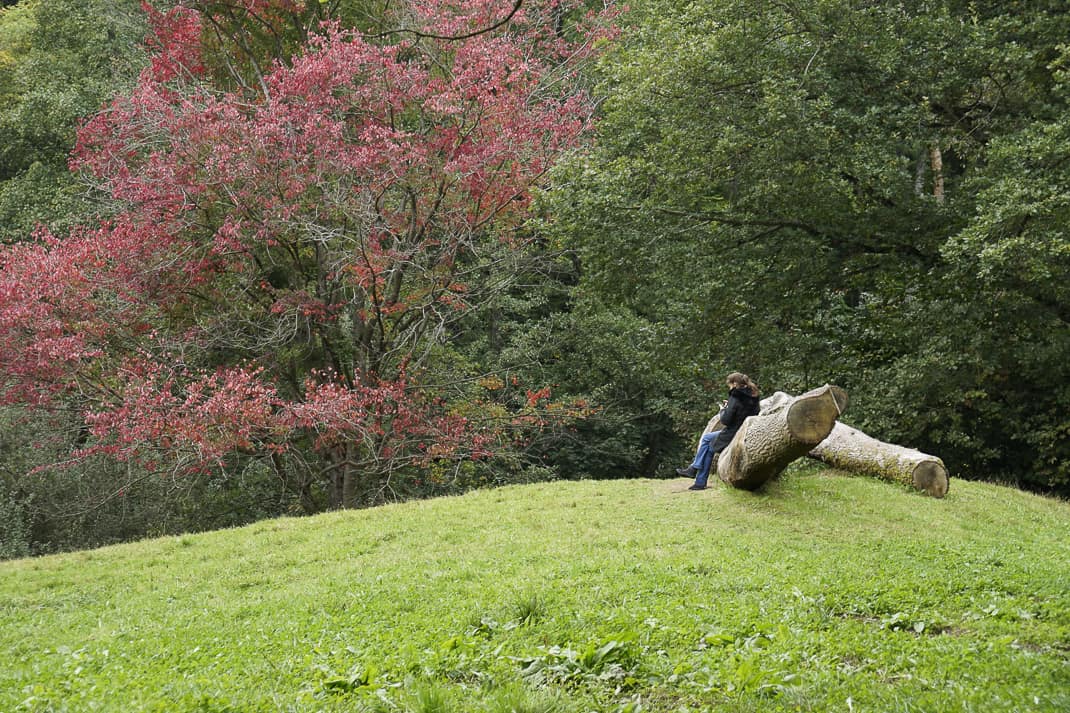
I took that as a good omen. It was the best hike of our trip. We entered the thickest of the Black Forest, a trail so dark and the canopy so high we could barely see the gray skies above. We soon came to a clearing of a big green meadow with a wooden love seat, pointed romantically to the trees beyond.
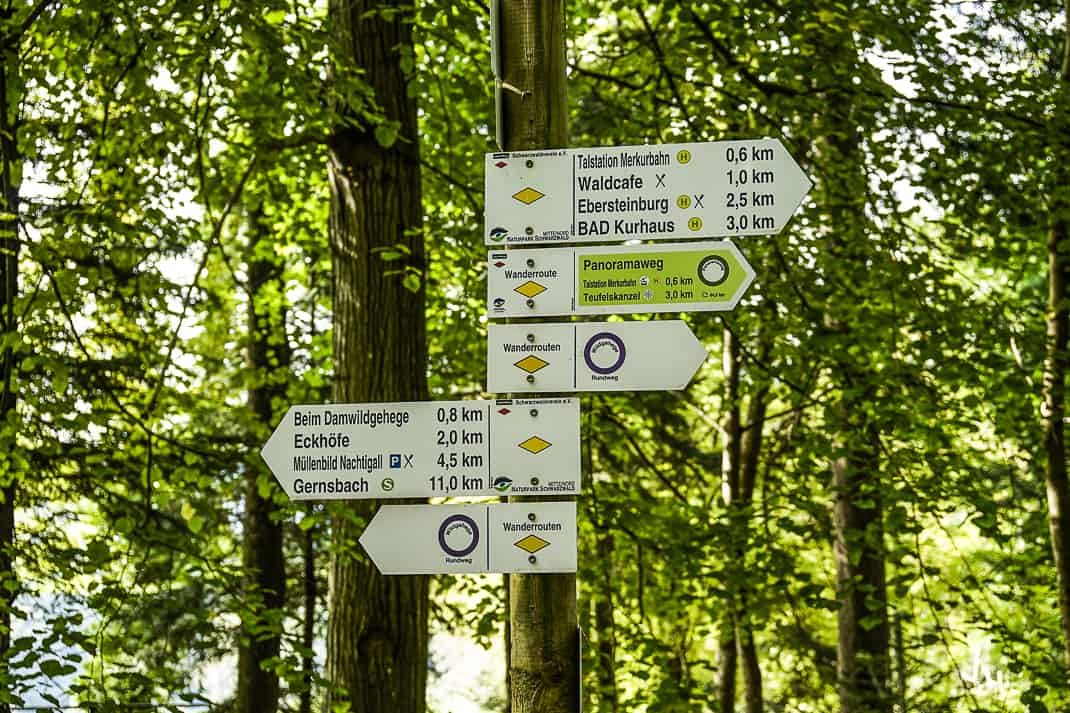
The trail leaned downhill through thick forest and into tiny villages of just a few settlements. Big farmhouses and pens with clucking chickens and snoozing rabbits greeted us.
The trail soon turned into a narrow gravel road and atop a hill we found ourselves in the middle of wine country. Bright green grapevines with signs indicating Pinot Noir, Sauvignon Blanc, Pinot Blanc and Riesling rolled down a hill with the small town of Lichtental below.

Amongst the vineyards stood the smallest church I’ve ever seen. Built in the 1700s (The last two numbers of the date were rubbed off from wear), it looked like a big dollhouse. It was maybe 10 square meters with only eight pews. We took our lunch of salami and cheese paninos and chocolate cookies from the spa’s breakfast buffet and had a picnic on the bench behind the church.
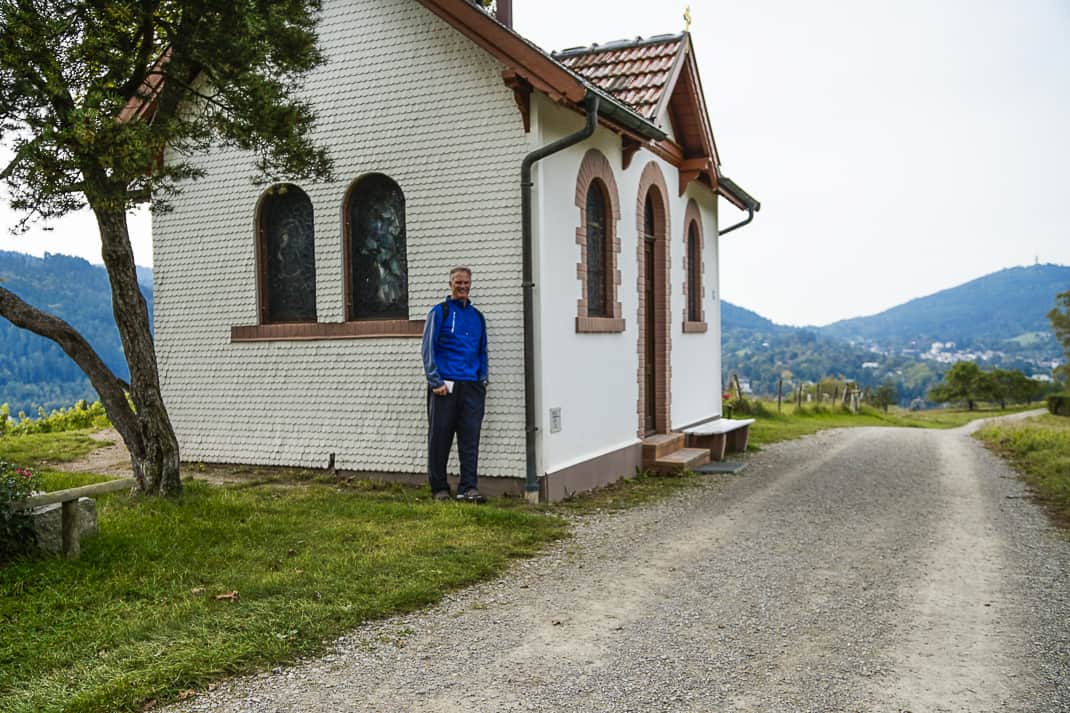
The only thing better than a Jacuzzi in a spa is eating salami and cheese sandwiches next to a 300-year-old church in a vineyard overlooking a cute German village. In the 2.5 miles we covered over two hours, we saw all of six other people.
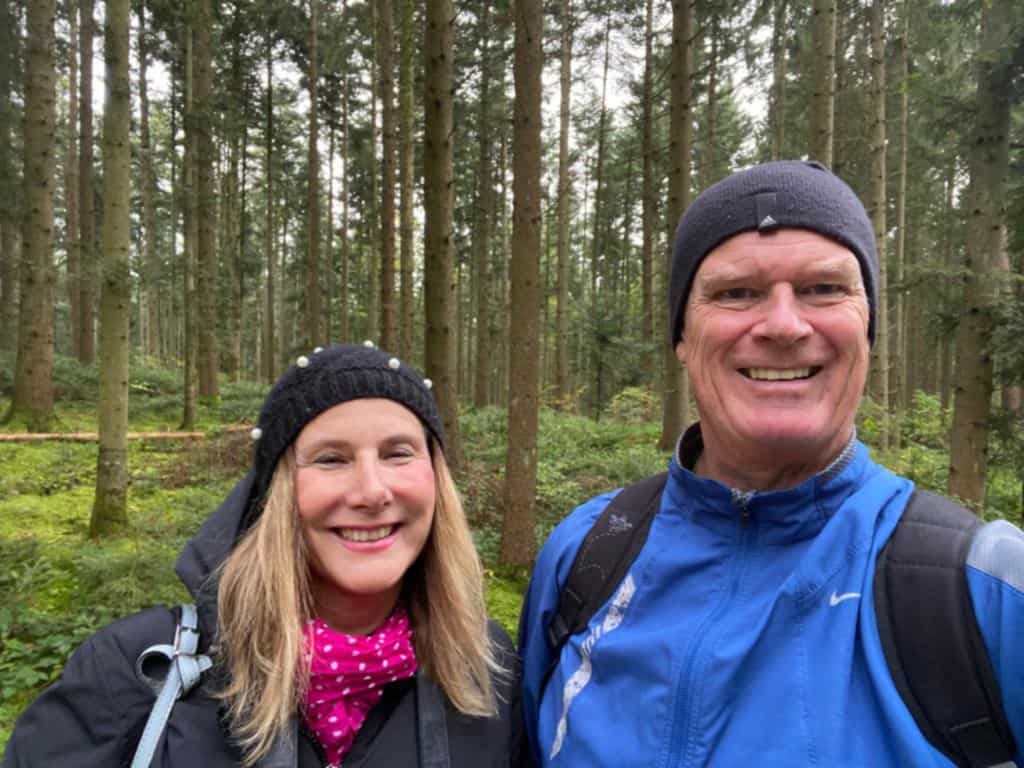
The spa trail
We couldn’t help noticing on our last hike across the street from our spa how well preserved the Black Forest is. We saw very little clearcutting. At one spot, some freshly cut logs lay on the ground. But beyond it were about 30 small trees, recently planted, with little green wire fences around them for protection.
Unesco has established a large chunk of the forest as a Biosphere Reserve status. It is protecting 244 square miles of woodlands, meadows and moorland for wildlife to roam free with minimal human contact. In 2014 Germany established the Black Forest’s first national park, the Schwarzwald Mitte/Nord between Baden-Baden and Freudenstadt.
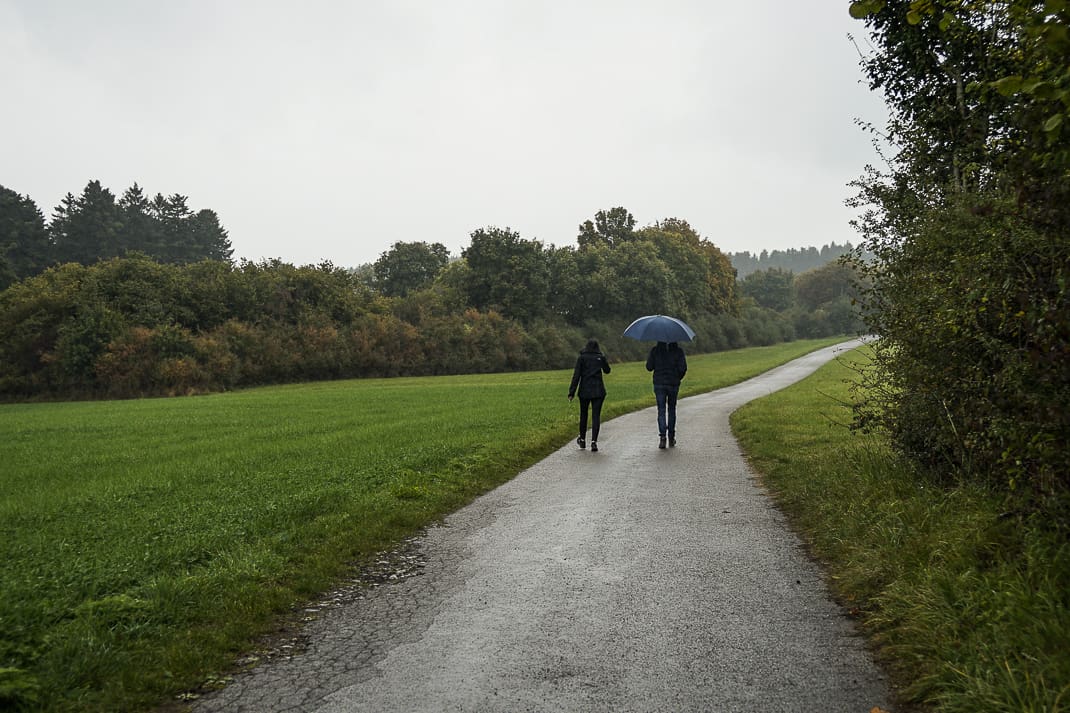
That afternoon we took the prettiest drive of the trip. The Schwarzwaldhochstrasse, also known as the Black Forest Highway, is a 50 -mile stretch lined with trees of red and green and gold. Ancient stone walls line the narrow two-lane road as we passed quaint, quiet villages until we hit the end of the road at Alpirsbach (pop. 6,700).
It’s named for a tale from its Benedictine monastery where, the story goes, a drunk cleric once dropped his glass of beer into the river and slurred, “All bier ist in den bach! (All the beer is in the stream!)” Their local beer is called Alpinstracher and we walked into the tiny, charming beer hall called Klosterschaenke with two dart boards, a jukebox and husky, friendly bartender who insisted on seeing our vaccination Green Passes.
The beer was a good way to prost the end of our trip. It was worth the wait and I’m confident the Black Forest will be around forever.
And that’s no fairy tale, either.
If you want to go …
How to get there: Waldachtal is 40 miles southwest of Stuttgart. For a more lively town, go to the Black Forest capital, Baden-Baden, west of Stuttgart 60 miles. It’s a spa town with numerous thermal baths (Thus its name) throughout the city of 54,000.
Car rental: You can reach Black Forest towns via bus and some trains but it’s sporadic. Car rental is a must. We rented from Global Rental Car at a car rental complex at Hauptstrasse 189 six miles southwest of Stuttgart. It’s better to rent at the airport. We paid 288 euros for four days.
Where to stay: Vital & Wellnesshotel Allblick, 49-07-486-9800, www.albblick.de, info@albblick.de. We paid 144 euros per night including breakfast and spa with saunas, Jacuzzi, body treatment center and indoor and outdoor swimming pools.
When to go: July temperatures range from 50-80 but with 12 days of rain. October is ideal if a little cooler from high 30s to 60. However, only four days of rain. Expect snow in winter.
For more information: Black Forest Tourism Association, 49-761-896-460, www.schwarzwald-tourismus.info, Weisentalstrasse 5, Freiburg. It has loads of hiking information. Also check tourist agencies in towns near where you wish to hike.


October 21, 2021 @ 4:56 pm
I’m always enticed by your descriptions of great places to visit. This is one I’ve already seen.
Am renewed with gratitude for the hospitality of Gerhard and Cristel, our local hosts in 1999. Gerhard knew the area and its farmers intimately and professionally. I don’t remember the hikes he took me on or the villages we visited, but we were enchanted and blessed.
Thanks for reminding me of those delightful times.